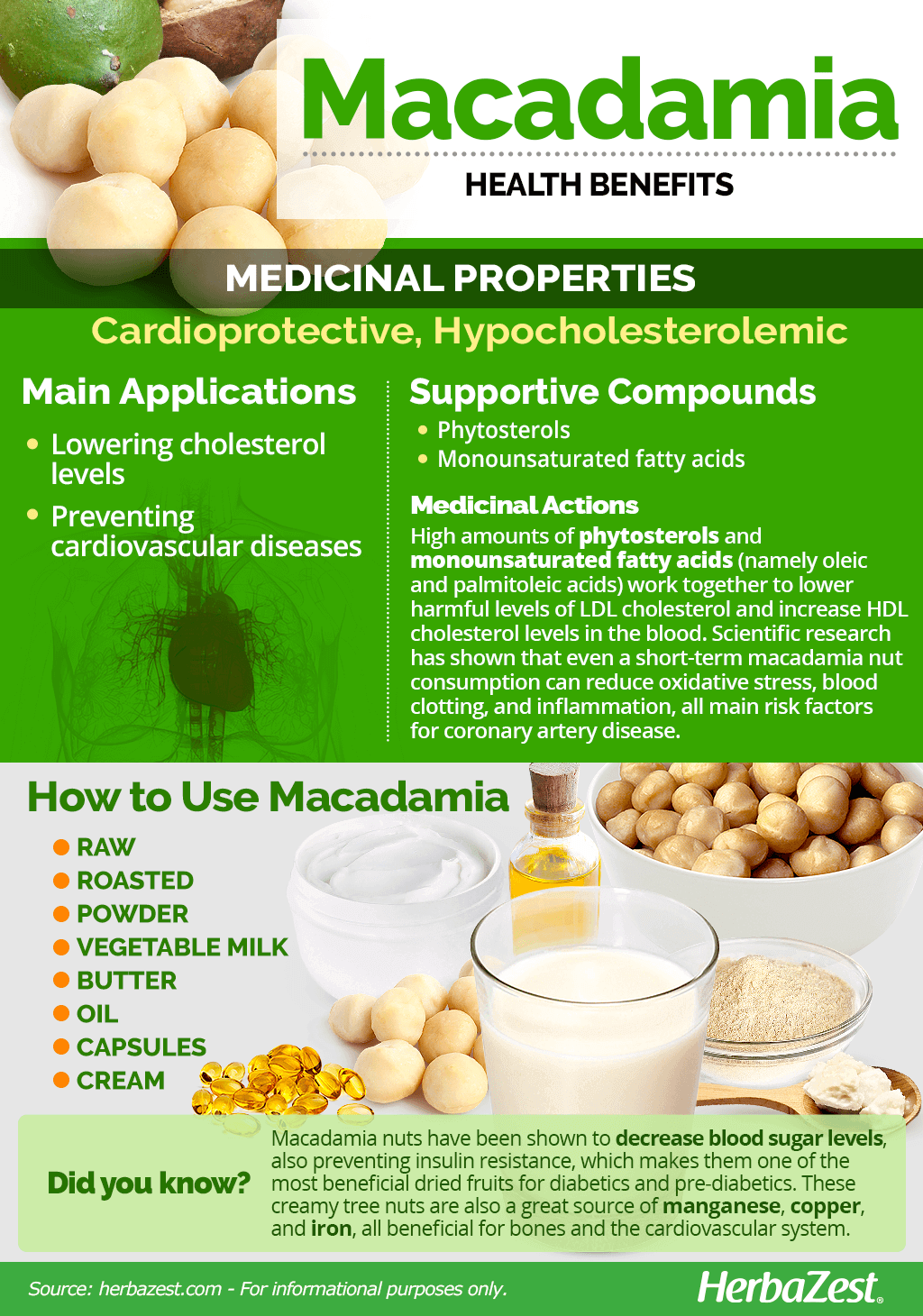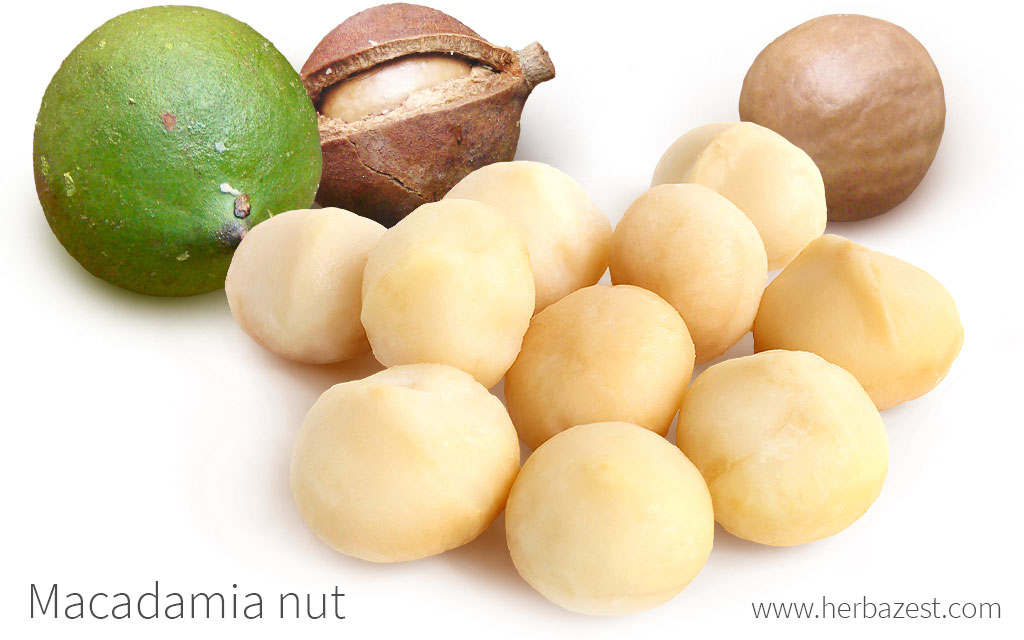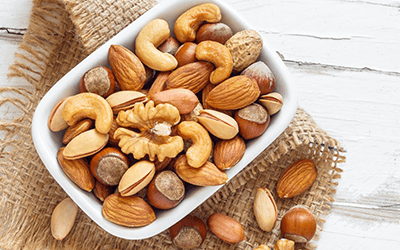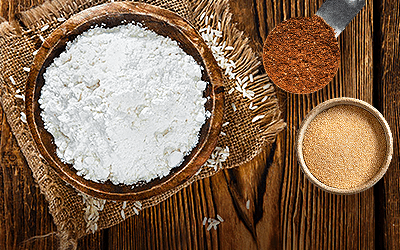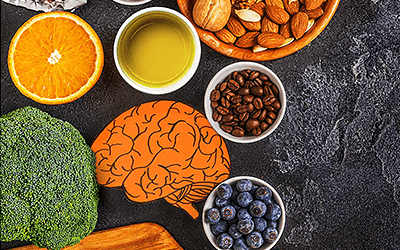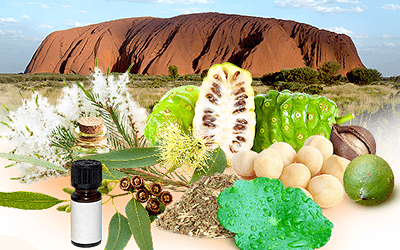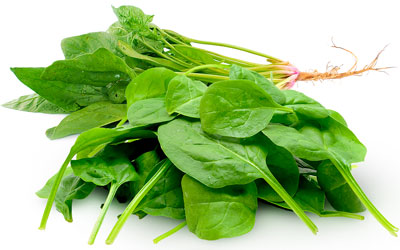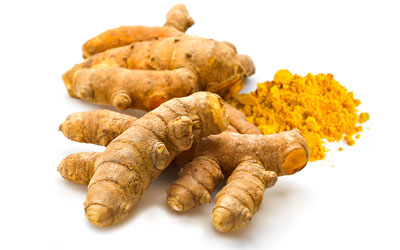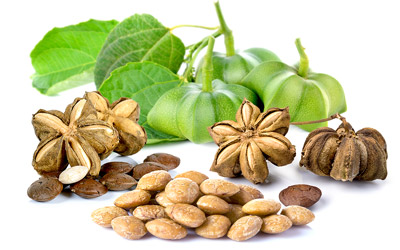Also known as Australian nuts and Queensland Nuts, both commercially-produced species of Macadamia nut - M. integrifolia and M. tetraphylla - are native to the Australian rainforests, specifically Queensland and New South Wales. Macadamia nuts are rich in nutrients, and their high fat content is mainly monounsaturated. In fact, despite people avoiding them in their diets for fear of gaining weight, regular intake of macadamia nuts not only reduces body fat, but also helps to maintain a healthy weight.
Macadamia Nut Medicinal Properties
- Medicinal action Cardioprotective, Hypocholesterolemic
- Key constituents Phytosterols, monounsaturated fatty acids
- Ways to use Capsules, Food, Juiced, Powder, Essential oil
- Medicinal rating (3) Reasonably useful plant
- Safety ranking Safe
Health Benefits of Macadamia Nut
Macadamia nut benefits are numerous. These creamy tree nuts are very well-known for their cardioprotective, antidiabetic, and anticholesterolemic action. Among their several health-conferring properties, the most remarkable macadamia nuts benefits are:
Lowering cholesterol levels. As part of a healthy diet, macadamia nuts have shown favorable influence over the lipid profile in patients with high cholesterol.
Preventing cardiovascular diseases. The healthy fatty acids contained in macadamia nuts have proven beneficial for treating and preventing cardiovascular diseases, such as atherosclerosis and thrombosis.
Additionally, macadamia nuts have been shown to decrease blood sugar levels. Studies that have observed the eating habits of Australian aboriginal people have revealed that their high intake of monounsaturated fat (mostly contained in nuts, like macadamia) effectively protects them from developing insulin resistance. Macadamia nuts are among the most beneficial dried fruits for diabetics and pre-diabetics.
AS PART OF A HEALTHY, LOW-CARB DIET, MADACAMIA NUT HAS BEEN SHOWN TO PREVENT INSULIN RESISTANCE.1
How It Works
Macadamia nuts benefits hail from their high levels of phytosterols, such as ß-sitosterol, as well as monounsaturated fats, namely oleic and palmitoleic acids, which can lower LDL (bad) cholesterol and increase HDL (good) cholesterol levels in the blood. Regular intake of macadamia nuts has been associated with a significant increase in serum healthy fatty acids and an important reduction in saturated fatty acids.
Scientific research has shown that even a short-term macadamia nut consumption, in spite of an increased intake of dietary fat, positively alters the biomarkers of oxidative stress, thrombosis, and inflammation, all which are major risk factors for coronary artery disease.2
Australian aborigines' diet is uniquely low in carbohydrates and high in unsaturated fatty oils - basically from macadamia nuts. This has been shown to reduce the demand for insulin secretion, protecting them from a genetic predisposition to insulin resistance and its consequences: diabetes mellitus, coronary heart disease, and obesity. Studies have concluded that this diet, along with an active lifestyle, may become the standard reference for modern human nutrition.
Macadamia nuts have the highest fat content of all nuts, up to 75% of the kernel, which makes them energy dense.3
Other herbs with cardioprotective properties, also capable of lowering harmful cholesterol levels, are Brazil nuts, sesame, and walnuts.
Macadamia Nut Side Effects
There are no negative side effects registered from eating macadamia nuts. However, people with nut allergies should avoid them altogether.
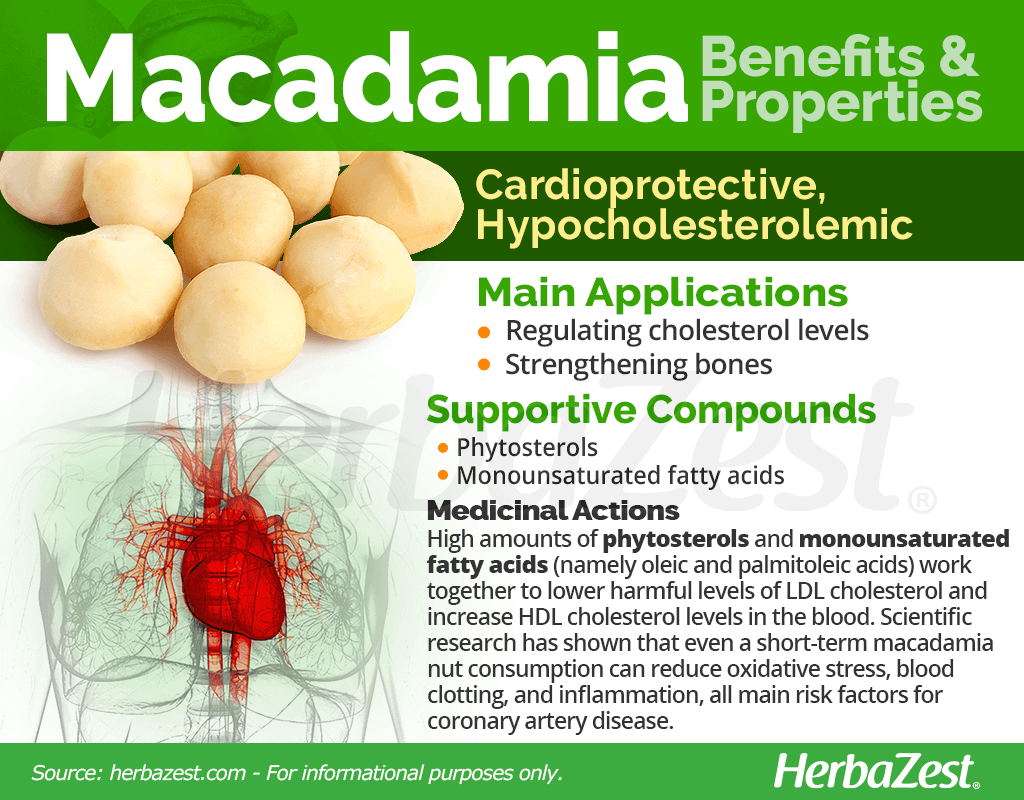
Macadamia Nut Nutrition
Macacadamia nuts nutrition is impressive. These creamy tree nuts are an excellent source of minerals, mainly manganese, copper, and iron, all beneficial for the cardiovascular system and bone integrity.
These delicious tree nuts also provide a high content of B-complex vitamins, particularly B1 (thiamin), which is vital for metabolic functions. Thiamin is sometimes called an "anti-stress" vitamin because it strengthens the immune system and improves body's ability to withstand stressful conditions.
Macadamia nuts nutrition is rounded by small amounts of fat-soluble vitamin E, which has a potent antioxidant action that prevents damage to cell membranes and DNA from free radicals.
An ounce (28.35 g) of macadamia nuts provides 204 calories, as well as 4 and 33% of the recommended daily value for protein and fats, respectively.
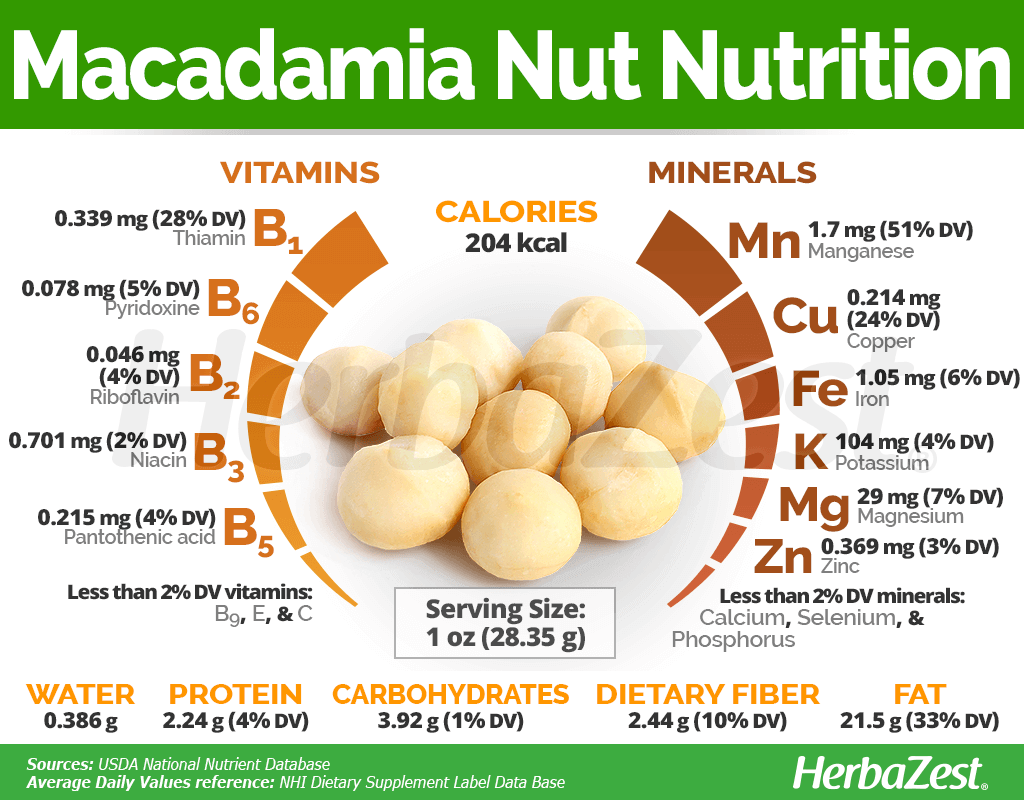
How to Consume Macadamia Nut
- Edible parts Seed, Oil
- Edible uses Beverage, Oil
- Taste Sweet
Because of their rich, exotic flavor, macadamia nuts are commonly used in desserts, such as cookies and candies, but they can also be processed into a rich vegetable milk or essential oil. Like other nuts, macadamias can be transformed into butter or flour that can be used for cooking or as a health supplement.
Natural Forms
Raw. In this way, macadamia nuts are widely consumed in order to fully reap their nutritional benefits as well as their healthy fats and antioxidant compounds, which can reduce the risk for cardiovascular diseases.
Roasted. Roasting nuts has been associated with slight reduction of their nutritional value, especially at high temperatures;4 however, roasted macadamia nuts still provide great amounts of nutrients and heart-healthy fatty acids.
Powder. In this form, macadamia nuts can add great nutritional value to baking recipes (such as bread, cakes, cookies, etc.) and smoothies.
Vegetable milk. Creamy and rich in healthy fatty acids, macadamia nut juice or "milk" can be taken on a daily basis to complement a balanced diet.
Herbal Remedies & Supplements
Butter. Although macadamia nuts are not as protein-rich as other tree nuts, the butter obtained from blending their kernels is a great source of monounsaturated fatty acids, which provide satiety, reduce cholesterol, and prevent heart problems.
- Oil. Macadamia essential fatty acids make a heat-resistant oil, which can be used for cooking, however, due to its high cost is mostly used as an ingredient in hair and skin beauty products.
Capsules. In this supplemental form, the beneficial fatty acids of macademia nuts can be obtained in standardized, daily doses for cardiovascular health and even for blood sugar control.
Cream. Due to its richness of monounsaturated fatty acids, the oil extracted from macadamia nuts is a popular ingredient in moisturizing, antioxidant body creams.
MACADAMIA NUT MAKES FOR A GREAT, 80% MONOUNSATURATED FAT COOKING OIL THAT CAN RESIST UP TO 390°F (199°C) WITHOUT SIGNS OF OXIDATION.
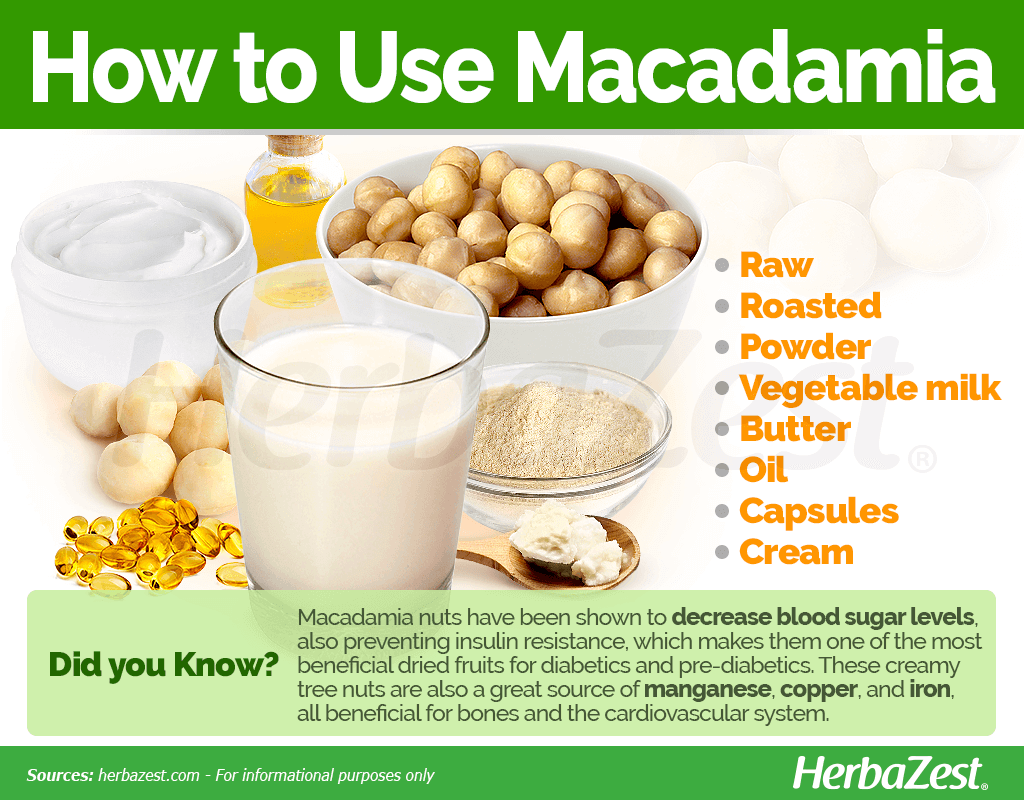
Growing
- Life cycle Perennial
- Harvested parts Seeds
- Light requirements Full sun, Partial shade
- Soil Light (sandy), Heavy clay
- Soil pH 5.6 – 6.0 (Moderately acidic), 6.1 – 6.5 (Slightly acidic)
- Growing habitat Temperate climates
- Planting time Fall
- Growing time 5-12 years
- Propagation techniques Grafting
The macadamia nut tree is an evergreen that typically grows in moist places and along riverbanks. The bark is rough but uniform, brown and dark red when cut. Macadamia has dense clusters of short lateral rootlets in well-defined rows around the parent root axis, whose primary function appears to be allowing maximum absorption by increasing the surface area of the root system. The robustness of seedlings seems to be related to the extent of the root development.
When grown in a large tub, the macadamia tree makes for a great container plant, and M. tetraphylla is well suited to the home garden, but it is also grown commercially in California. However, macadamia trees require specific conditions to thrive and are cultivated in only a few countries.
Growing Guidelines
The macadamia tree is ideally suited to a mild, frost-free climate with abundant rainfall distributed throughout the year, roughly the same climate for growing coffee.
The macadamia tree grows better in full sun, although in hot climates, partial shade can be beneficial. Windy locations should be avoided since the delicate branches can get broken, especially when loaded with nuts.
The mature macadamia tree is fairly frost hardy, tolerating temperatures as low as 24°F (-4°C), but the flower clusters are usually killed at 28°F (-2°C). However, consistently-high summer temperatures will reduce yields.
A wide range of soil types are suitable for macadamia trees as long as they are well drained. They do best, however, in deep, rich soils with a pH of 5.5 - 6.5.
Irrigation is more important during certain critical periods in the crop cycle, particularly from the time of nut set, through nut filling, and through the vegetative growth period in midsummer. It is important to water the macadamia tree regularly and deeply during dry periods.
Six months after planting, the trees should receive light applications of a balanced fertilizer, such as a citrus mix or fish emulsion containing no more than 1% nitrogen. Applications should be made at least twice a year.
Macadamia trees can self-pollinate, although varieties fluctuate from being totally self-compatible to being almost self-sterile. Wind pollination may play some role, but bees are apparently the major agent in pollination. Cross-pollination by hand has been shown to increase nut set and quality.
A macadamia nut tree can be easily grown from seed, but the seedlings may take many years to bear a crop, and the quality of the nuts is unpredictable. Grafting is the most common method of producing nursery trees, and it is best done in spring or autumn.
Harvest time for macadamia trees takes place from late fall to spring, when mature nuts fall to the ground. This is the best way to harvest macadamia nuts. A long pole can also be used to carefully knock down mature nuts that are out of reach.
The macadamia nut tree takes 5 - 12 years to produce nuts, and a good tree can produce nuts for 40 years. A regular macadamia tree can produce 30 - 50 pounds (14 - 23 kg) of nuts at 10 years age, and gradually increase for many years.
Additional Information
- Other uses Animal feed, Cosmetics, Fiber
Plant Biology
Macadamia trees are large, reaching 30 - 40 feet (9 - 12 m) high and almost as wide. Macadamia flowers bloom in long, narrow racemes, supported by the axis of leaves or the scars of fallen leaves. Macadamia integrifolia has creamy white flowers borne in clusters 6 - 12 inches (15 - 30 cm) long, while the flowers of Macadamia tetraphylla are cream-colored or pink, borne in clusters up to 15 inches (76 cm) long.
The leaves of Macadamia integrifolia are 8 - 11 inches (20 - 28 cm) in length, and usually occur in whorls of three. The adult leaves are whole with few spines. New growth is pale green. The spiny, often firm leaves of Macadamia tetraphylla usually appear in whorls of four and can grow up to 20 inches (50 cm) long. The new growth is bronzy pink.
The creamy, white kernel of macadamia nuts is surrounded by a hard seed coat (smooth in the case of Macadamia integrifolia), and enclosed in a green husk that splits open as the nut matures. Although Macadamia tetraphylla is often referred to as the rough-shelled macadamia, some cultivars have a smooth seed coat, while others are rough and pebbled.
Classification
The Macadamia genus belongs to the Proteaceae family, which is composed of flowering plants and mainly restricted to the Southern Hemisphere. It is a large family with around 80 genera and 2,000 species.
Varieties and Cultivars of Macadamia Nut
Considered natural hybrids between Macadamia integrifolia (with smooth-shelled nuts) and Macadamia tetraphylla (with rough-shelled nuts), there are nine species in the Macadamia genus, seven of which are native to eastern Australia, one species (Macadamia neurophylla) from New Caledonia, and one species (Macadamia hildebrandii) from Indonesia. Some of the nuts of other species of the genus do require processing to be edible.
Although native to Australia, Macadamia integrifolia and Macadamia tetraphylla are now a crop of commercial importance in Hawaii.
The most well-known macadamia cultivars are 'Beaumont' (Australian hybrid),'Burdick' (California), 'Cate' (most widely-adapted cultivar for commercial use in California), 'Dorado' (Hawaii), 'Elimbah' (Australia),'James' (California), 'Keaau' (Hawaii), 'Keauhou' (Hawaii), 'Vista' (California), and 'Waimanalo' (Hawaii).
Historical Information
The macadamia tree has been used by native Australian aborigines for centuries, but was made known to the Western world by British colonists in Queensland. A tree of macadamia, grown from a seed planted in 1857 by Walter Hill, Director of the Botany in Brisbane, still blooms today. The tree was first described by Baron von Mueller, who also named it after his friend, Scotsman John MacAdam, a physician, and secretary of the Philosophical Institute of Australia, who curiously died before having tasted the delicious macadamia nut.
The macadamia was introduced to Hawaii around 1881, initially used as an ornamental tree and for reforestation purposes. A large selection was presented by the Hawaii Agricultural Experiment Station in 1948, which led to the modern Hawaiian macadamia industry.
Two seedling macadamias, planted in the early 1880's on the Berkeley campus of the University of California, are still standing. The trade of new and improved varieties between Hawaii and California started around 1950. Today, macadamias are not only commercially relevant in Australia, but also in South Africa and Central America.
Economic Data
Major producing countries of macadamia nuts are Australia, South Africa, Guatemala, Costa Rica, and Brazil. Other African producers are Kenya, Malawi and Zimbabwe, and these creamy tree nuts are also cultivated in Hawaii, Florida and Southern California.
The world production of macadamia nuts for the period 2015-2016 was of 3,775,259 metric tons, and only in 2018, Australia produced 54,344 tons, whereas Hawaii generated over 24,500 tons.
The Netherlands, Germany and the United Kingdom are currently the largest import markets for macadamia nuts in Europe.
Other Uses
Macadamia plants have non-health applications, including:
Landscape design. Macadamia trees are planted for ornamental purposes.
Cosmetic industry. Macadamia nut oil is used for a variety of skin and hair care products.
Livestock feed. The kernels of macadamia nuts (even the poor quality ones) can be ground to be used for animal feed.
Ecological. Macadamia nuts are of great significance to the Australian ecosystem. Cassowaries (flightless birds closely related to the emu) and rodents play an important role in dispersing the seeds, and pet hyacinth macaws are able to break the hard shells and eat the nuts.
Sources
- Australian Macadamias, Frequently asked questions | The macadamia industry
- Australian Nut Industry Council, Industry Overview
- California Rare Fruit Growers, MACADAMIA, Macadamia spp.
- Government of South Africa, Department of Agriculture, Forestry and Fisheries A PROFILE OF THE SOUTH AFRICAN MACADAMIA NUTS MARKET VALUE CHAIN, 2012
- INC International Nut & Dried Fruit, World Nut Trade Flows
- Nutrition Research Reviews, Australian aboriginal plant foods: a consideration of their nutritional composition and health implications, 1998
- The Journal of Nutrition, A Macadamia Nut-Rich Diet Reduces Total and LDL-Cholesterol in Mildly Hypercholesterolemic Men and Women, 2008
- United States Department of Agriculture, Pacific Region - Hawaii Macadamia Nuts, Final Season Estimates
- University of Hawaii, Extension Entomology & UH-CTAHR Integrated Pest Management Program Macadamia
- World Edible Nuts Economy, pp. 432, 436
Footnotes
1 Lima EA et al. (2014); Mediator of Inflammation; Macadamia Oil Supplementation Attenuates Inflammation and Adipocyte Hypertrophy in Obese Mice. Retrieved Nov. 21th, 2019.
2 Garg ML, Blake RJ, Wills RB, Clayton EH (2007); Lipids; Macadamia nut consumption modulates favourably risk factors for coronary artery disease in hypercholesterolemic subjects. Retrieved Nov. 21th, 2019
3 Alasalvar C, Shahidi F (2008); published by CRC Press, Taylor & Francis Group; Tree Nuts: Composition, Phytochemicals, and Health Effects.
4 W.Schlörmann et al. (2015); Food Chemistry; Influence of roasting conditions on health-related compounds in different nuts. Retrieved Nov. 21th, 2019
